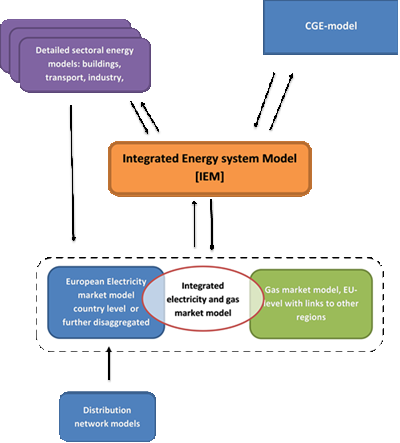ESTRAC: Integrated Energy System Analysis | Amirhossein Fattahi

Field | Discipline
- Decarbonization
- Energy transition and system integration.
Expertise
- Agent-Based Modelling
- Energy Modeling
Summary
GHG emission reduction ambitions of 80-95% in 2050 will require a large transformation of the energy system, with a huge increase in energy sources such as, for example, wind, sun, nuclear and CCS which are largely or fully CO2-free. While it is as yet unknown what part the different technologies will have in the transition path up to 2050 and beyond, it is to be expected that variable and uncertain energy sources such as wind and sun will have a considerable share in electricity generation.
Integrating this intermittent generation will require increasing levels of flexibility in both supply from other sources and from demand, a flexibility that will not only be provided within the electricity system but which can also be found in other parts of the energy system, such as in gas supply and demand and in the provision of heat for both space heating and for agriculture and industrial processes.
Understanding the possible interlinkages and interactions between the different parts of this increasingly integrated energy system (such as gas, electricity, heat) will be vital in order to be able to make the right investment decisions on, among others, infrastructure, energy production and spatial planning, to design policies and regulation which will provide the right incentives and to allow flexibility to be used from within the whole energy system. This will also require insights into the transition path itself, in the possible ways in which the energy system can evolve towards a future low-carbon system.
The transition is not only relevant at the national or international level, the energy system at the regional or local level will also go through a transformation when we move towards a low-carbon energy system. Indeed, combining developments at all levels and over various areas such as economic, social and technical domains will be a central issue of the transition. Moreover, this also requires policies and strategies from stakeholders at the regional level, policies and strategies which will have to be based on information and insights on how the transformation of the energy system will translate to the regional and local level.

The overall objective of this ESTRAC - IES research program, which is a part of the ESTRAC project, is to provide insights in the linkages and interactions of future integrated energy systems with increasing shares of intermittent renewables in the electricity supply. More specifically, the key objective is:
To provide detailed and quantitative insights in the transition paths towards future integrated energy systems at both the regional and the (inter)national level, based on detailed representations of the full energy system, which includes the various parts of the energy system (electricity, gas, heat etc.) at different geographical scales, taking into account economic, societal and spatial aspects and using information on, for example, flexible technologies, the potential for energy efficiency, demand response and data on consumer behavior.
The insights provided by this research will allow for a better understanding of future market developments, knowledge about promising flexibility options (both technologies and options such as demand side response) and the drivers and barriers for these options. It will also help identify the role of different energy sources, technologies (e.g. gas, coal and ccs) and the crucial role of infrastructures (such as gas and heat pipelines and electricity grids) within the transition itself, because we will explicitly consider the transition path and not only focus on the long-term low-carbon energy system. This will help policy makers, businesses and other stakeholders to make better-informed decisions on policies, regulation, and investments such as market design, energy infrastructure, R&D, and technology choice.
Supervision by
-
Prof. dr. A.P.C. (André) Faaij | Integrated Research on Energy, Environment and Society - IREES | ESRIG, University of Groningen.
-
Dr. P.R. (Paul) Koutstaal | Planbureau voor de Leefomgeving (PBL).
-
Dr. J. (Jos) Sijm | ECN/TNO.
More information and contact details can be found on the personal profile of Amirhossein Fattahi
